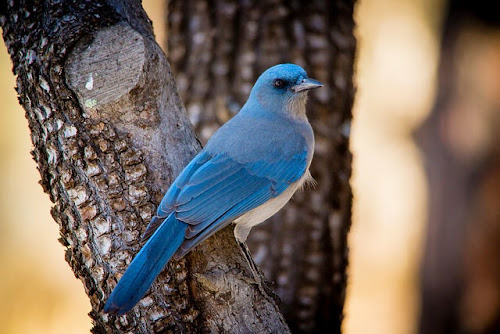Scarlet Ibis
photo link
The Scarlet Ibis (Eudocimus ruber) is one of the most brilliantly colored wading birds in the world. It inhabits the wetlands of tropical South America and islands of the Caribbean. The species is easily recognized by the adults' bright scarlet plumage, pink skin on face, pink bill and red legs. Adults measure between 55–63 centimeters (22–25 in) long and weigh around 1.4 kilograms (3.1 lb). The males are slightly larger than females.
Northern Cardinal
photo link
The Northern Cardinal (Cardinalis cardinalis) is a large crested finch widespread in North America. This redbird or common cardinal is found in woodlands, swamps and gardens. It is a medium-sized songbird that measures around 20–23.5 cm (7.9–9.3 in) in body length and a wingspan of 25–31 cm (9.8–12.2 in). Adults weigh between 33.6–65 g (1.19–2.29 oz), 21 cm (8.3 in). Males have vivid red body and black face, while females are duller overall.
Crimson Finch
photo link
The Common Crimson Finch (Neochmia phaeton) (also known as the Blood Finch) is a common passerine bird found in Australia, Papua New Guinea, and Indonesia. This stunning red bird preferred habitats include grassy plains, moist savannahs, along rivers and swamps. On average, the species measures around 12cm.
Males have crimson plumage on the face, flanks, breast, rump, and tail. Adult males have dark gray crowns, red beaks, brownish-red wings, and brown bellies. The females have the same color pattern but they are paler overall.
Summer Tanager
photo link
The Summer Tanager (Piranga rubra) is a medium-sized American songbird. The species is found in the northeast and midwestern United States during summer and migrate to tropical regions of Mexico and Central America in the winter. These stunning red birds prefer treetops and tall forests.
Adults measure 17 cm (6.7 in) in length and 29 g (1.0 oz) in weight. Males have stout pointed bills and are rose red without specialized markings or patterns. Females have light-orange underparts and olive on top, with olive-brown wings and tail.
Red Munia
photo link
The Red Munia (Amandava amandava) also known as strawberry finch or red avadavat, is a small, sparrow-sized bird. These birds measures around 9-10cm (3-4 inches). They are found in the open fields and grasslands of tropical Asia. These birds measures around 9-10 cm (3-4 inches).
Red Munia is easily identified by the rounded black tail and the bill that is seasonally red. During breeding season, the males appear red on most of the upper parts. Top of head and back are deep mahogany brown. The beak is red and the eyes are black with a white stripe just below each eye. There are white spots throughout their plumage and the legs are pink.
Red-billed Firefinch
photo link
The Red-billed Firefinch (Lagonosticta senegala) is a small passerine bird widespread throughout Sub-Saharan Africa. The species is known for its scarlet plumage, pink bill and brown wings. Even the legs and feet are red. One distinct feature is its brilliantly yellow eye ring. Females have uniformly brown upperparts and buff underparts. The Red-billed Firefinch is 10 cm in length.
Hepatic Tanager
photo link
The Hepatic Tanager (Piranga flava) are one of only five Tanager species that occur naturally in North America. In the United States, they are found in Arizona, New Mexico and Texas. Their range stretches south to Mexico. This medium-sized American songbird is found in open pine and pine-oak forests. It measures about 6.75 inches in length (including the relatively short tail).
Adult males plumage is brick red to red-orange with the brightest color on the forehead and throat. They have dark cheeks with dark eye streaks and grayish flanks. Heavy, dark bill is slightly hooked.
Females have olive-yellow to orange-yellow forehead, throat, and underparts. Grayish ear coverts and flanks. Crown, nape, wings, and back grayish olive.
ʻIʻiwi
photo link
The ʻIʻiwi (Vestiaria coccinea), pronounced ee-EE-vee, is one of the most spectacular of Hawaiian honeycreepers. Also known as Scarlet Hawaiian Honeycreeper, the species inhabit the islands of Hawaiʻi and Kauaʻi, with smaller colonies on Molokaʻi and Oʻahu. A medium-sized bird that measures 15 cm in length and weighs around 16 - 20 g.
The adult ʻIʻiwi is mostly scarlet, with black wings and tail, a yellow eye ring, and a long, curved, salmon-colored bill. Males are larger than females but otherwise similar in appearance.
Scarlet Macaw
photo link
The Scarlet Macaw (Ara macao) is a large South American parrot. It is found in forests, jungles and broken woodland. It is the national bird of Honduras.
The vibrant red plumage with blue wings and yellow accents is unmistakable, and both male and female birds have similar coloration and markings.
Red-headed Woodpecker
photo link
For some birds, while their plumage may not be entirely red, specific red markings are their most noticeable feature. The Red-headed Woodpecker (Melanerpes erythrocephalus) is a prime example of this. This red beauty is a small or medium-sized woodpecker found in North America.
It measures from 19 to 25 cm (7.5 to 9.8 in) in length, with a wingspan of 42.5 cm (16.7 in). It weighs from 56 to 97 g (2.0 to 3.4 oz).
Adults have dark red head, chest and upper throat. Black and white back, wings and abdomen. Bill, legs and feet are black.



















































